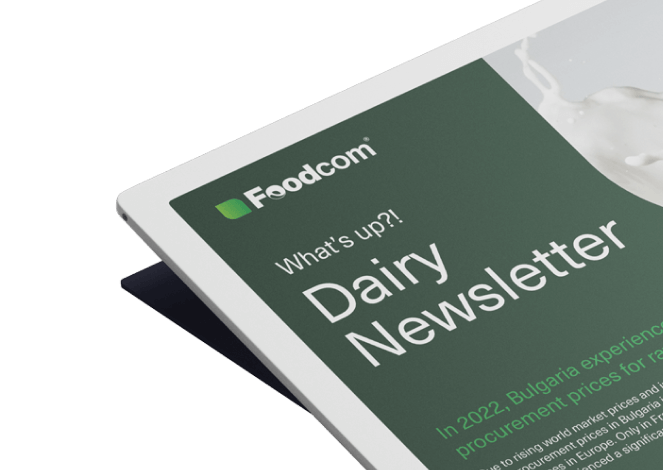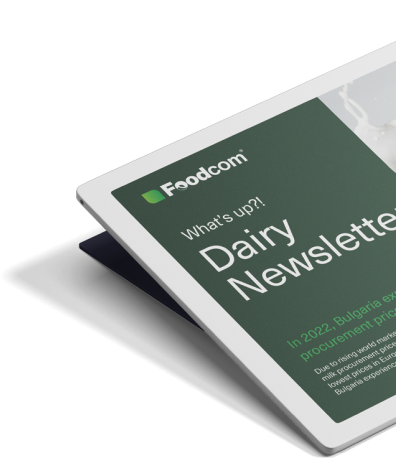- After a quiet start to the year, the rapeseed lecithin market picked up pace with the recovery in processing.
- Proven goods, reliable supplies and partnerships based on trust are becoming increasingly important in trade.
- Asia and the Middle East are increasing imports, Europe maintains its leading position, and North America is developing canola-based production.
- The coming year will be an opportunity for growth for companies that can think long-term and react faster than the market.
Market dynamics
The year 2025 brought participants in the rapeseed lecithin market quite a few changes and a few surprises. After a quiet start, when the supply-demand relationship remained stable, the sector began to gain momentum with the recovery in food processing. In Europe, there was a moderate balance, with producers operating in a predictable cost environment and trade proceeding without major disruptions. In North America, the situation was similar, although demand from the feed industry showed a little more caution. In Asia, on the other hand, heightened volatility was evident, mainly through rising transport costs and currency fluctuations. Despite competitive pressure from soya lecithin, the rapeseed variant maintained its strong position due to its non-GMO origin, neutral taste and good technological properties.
From the third quarter onwards, trade dynamics began to diversify between regions. In Europe, there is increasing talk of limited availability of raw material, prompting customers to plan deliveries earlier. At the same time, North America is recording greater interest in products from a proven source, while Asian and Middle Eastern markets are more actively reaching out for European lecithin, appreciating its predictable performance and compliance with quality requirements. Oceania maintains a quiet pace of turnover, basing its production mainly on canola, a rapeseed variety with similar properties, which is the local equivalent of the European raw material. At the end of the year, the global market seems well balanced, with participants focusing not so much on volume as on security of supply, flexibility of contracts and transparent sourcing.
Regional analysis
Europe
The European rapeseed lecithin market in 2025 remains one of the most important centres for processing and trading of this raw material. Demand is driven primarily by manufacturers of bakery products, confectionery and ready meals, for whom stable parameters or non-GMO origin are important. The first half of the year was relatively quiet, with processors fulfilling previously concluded contracts and the availability of raw material allowing them to maintain continuity of supply without major disruptions.
From the third quarter, however, the situation began to change. Lower rapeseed harvests in parts of Central Europe and growing seed exports outside the EU limited the supply to local crushing plants. At the same time, there has been a noticeable increase in interest in Western Europe for higher-quality and better-functioning products as an alternative to soya emulsifiers, particularly in the premium sector.
At the end of the year, the market remains stable, albeit with a palpable tension on the supply side. Customers are increasingly looking for flexible contracts and reliable sources of supply, with transparency of origin and quality of logistics service playing a greater role in commercial relationships.
North America
The rapeseed lecithin market in North America is diversified along national borders. In the USA, soy-based products dominate, while Canadian processors are strengthening the position of lecithin extracted from canola, the local equivalent of rapeseed. Demand remained moderate in the first half of the year, with buyers focusing on medium-term contracts and rational inventory management, which promoted trade predictability.
The situation recovered somewhat in the third quarter. Growing demand for non-GMO additives and greater use of lecithin in the food and feed sectors increased the number of enquiries, especially in export markets. Mexico is also becoming an increasingly active importer, gradually increasing its imports of rapeseed lecithin from Canada and the United States after opening its market to non-GMO products.
At the end of October, the market remains well organised, although competitive pressure from soy lecithin continues to limit the pace of growth. There is growing interest among consumers in alternatives with a more sustainable environmental profile, which favours canola products. The end of the year is marked by stable relationships and a reasonable balance between supply and demand with no signs of abrupt changes, but with the potential for further strengthening of the raw material’s position in 2026.
Oceania
The rapeseed lecithin market in Oceania remains small but well organised. It is primarily focused on the cultivation and export of canola, from which some local lecithin is produced. However, the vast majority of volume goes to processors in Asia and Europe, with domestic demand met by imports from Canada or the European Union. Supply remains stable and trade in the region is based on long-term contracts, which promotes stability of supply and reduces the risk of sudden market changes.
Australia is increasingly exploiting the potential of its raw material, whose quality parameters fit well with the requirements of Asian customers, especially from Japan and South Korea, which translates into growing interest in Australian lecithin in long-term contracts. Although Oceania does not play a key role in shaping global prices, it remains an important link in the supply chain as it provides high-quality raw material and consistent production standards.
Asia
In 2025, the Asian rapeseed lecithin market remains one of the most dynamic in the world. Demand is primarily driven by China, Japan and South Korea, where the food and feed industry is steadily increasing demand for emulsifiers of non-GMO origin. Imports ran smoothly in the first few months of the year, with major customers benefiting from regular deliveries from Canada and Europe. It was only in the third quarter that rising freight costs and currency fluctuations began to affect purchasing decisions, prompting some importers to move towards shorter contracts.
Over the course of the year, the position of rapeseed lecithin as an alternative to soy raw material has been strengthening, particularly in the premium segments. Japan and South Korea have consistently increased the share of purchases from premium destinations such as Australia, while China has maintained stable import volumes, adjusting its purchase structure in line with current transport costs and the yuan exchange rate. The region’s move towards diversification of supply sources is increasingly evident, with Asian importers balancing purchases between Canada, Australia and the European Union to reduce the risk of logistical disruptions and maintain continuity of supply.
Middle East and North Africa
Arab markets have maintained a growing interest in rapeseed lecithin in 2025. Demand is primarily driven by Gulf customers (Saudi Arabia, the United Arab Emirates and Qatar), who are increasing their imports of non-GMO additives as part of their diversification of supply chains. Trade was stable in the first half of the year, with most volumes coming from Europe, mainly from Germany, the Netherlands and France. The improved logistical situation on the sea lanes through the Suez Canal facilitated the rotation of goods and therefore allowed importers to rebuild stocks.
The second part of the year saw increasing activity from North African countries, especially Egypt and Morocco, seeking more competitive offers from Canada or Ukraine. Rapeseed lecithin remains attractive to producers there due to its neutral taste, low acidity and ability to replace soy emulsifiers in products labelled as non-GMO. Regional importers are also increasingly opting for contracts with longer supply horizons, allowing them to maintain production continuity.
Trends and forecasts
In the second half of 2025, the global rapeseed lecithin market has finally entered a phase of moderate stabilisation after a period of raw material uncertainty at the beginning of the year. Sustained demand from the food and feed industries helped to maintain continuity of supply, and market participants placed increasing importance on transparency of origin. Although the pace of trading is not high, trade remains fluid and the relationship between producers and distributors more predictable than in previous years.
It is also becoming increasingly clear that the source of competitive advantage is no longer low prices, but stability of supply or compliance with non-GMO requirements. Producers are investing in quality standardisation and chain-of-origin control to meet the growing demands of customers. In many cases, it is trust and repeatability of parameters that determine the choice of supplier.
Another trend is the gradual blurring of boundaries between regional markets. Rapeseed lecithin is increasingly moving between continents – for example from Australia to Asia. This pattern of global exchange favours price stability, but at the same time increases the importance of transport costs and exchange rates, which in 2025 remain one of the main factors influencing trade margins.
Carbon footprint reporting and sustainable origin certification initiatives are also attracting attention. More and more importers are requiring proof of compliance with local environmental standards, which favours suppliers with well-documented production processes. As a result, the role of audits, labelling or supply chain verification is growing.
Looking ahead, the outlook for 2026 remains cautiously optimistic. The market is likely to maintain its current turnover rate, with demand growth concentrated in Asia and among speciality food customers. The next quarter will depend on rapeseed harvest levels in Europe or Canada and the stability of logistics routes between continents. Contractual flexibility and the ability of suppliers to provide a high quality product will become crucial – this will determine competitive advantage in the coming year.


In 2025, rapeseed lecithin has finally stepped out of the shadow of soy. It has become a player with its own identity – stable, desirable, increasingly the first choice of buyers. The beginning of the year passed quietly, but the market quickly regained energy and gained momentum. Traders today act with more flair, reacting faster to changes. Clients are focusing on quality, timeliness, transparent origination. They are not looking for bargains, but for partners they can trust. It is no longer a fight for cents, but for reputation and reliability. The market has matured, it has gained character, the appetite for growth continues to grow. 2026 will be the year of those who can think long term.
Global Reports from Foodcom S.A.
Curious about what’s next for rapeseed lecithin? Discover the latest trends and insights that will shape the final months of 2025. Visit our blog as we regularly update our global reports. Stay up to date with Foodcom S.A.
![Overview of the rapeseed lecithin market in 2025 [Global Report] Overview of the rapeseed lecithin market in 2025 [Global Report]](https://foodcom.pl/wp-content/uploads/2024/11/rapeseed-lecithin-global-report-1520x760.png)
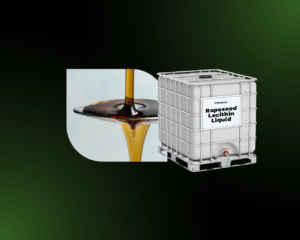

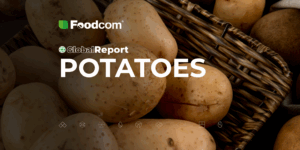
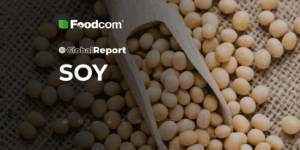
![Przegląd rynku masła w 2025 [Global Report] Przegląd rynku masła w 2025 [Global Report]](https://foodcom.pl/wp-content/uploads/2025/09/global-report-maslo-300x150.png)
